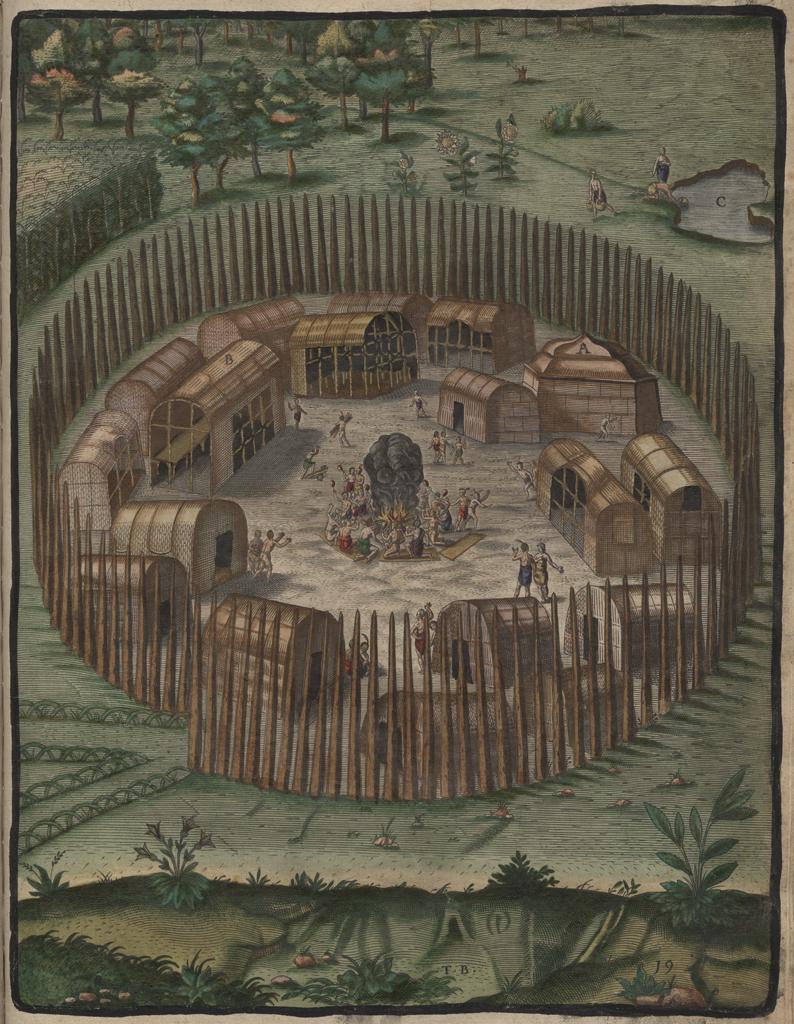Native American Village of Pomeiooc
Hand-colored version of Theodor de Bry's engraving of the American Indian town of Pomeiooc. De Bry's engraving, "The Towne of Pomeiooc," was originally published as an illustration in Thomas Hariot's 1588 book A Briefe and True Report of the New Found Land of Virginia.
In the center of the image stands Pomeiooc, which consists of several buildings surrounded by a circular palisade. In the middle of the town is a fire around which numerous people are sitting, kneeling, and standing. In the bottom left corner two footpaths lead away from the town. Outside the palisade in the upper left corner is a field of what appears to be corn.
Theodor de Bry was a Flemish-born engraver and publisher who based his illustrations for Hariot's book on the New World paintings of colonist John White. These depictions of the landscapes and residents of North Carolina provided Europeans with some of their earliest notions of what the North American continent looked like. An unidentified artist applied the color to this version of de Bry's engraving, apparently without having seen John White's original watercolor painting, "Indian Village of Pomeiooc."

Public Domain
Public Domain is a copyright term that is often used when talking about copyright for creative works. Under U.S. copyright law, individual items that are in the public domain are items that are no longer protected by copyright law. This means that you do not need to request permission to re-use, re-publish or even change a copy of the item. Items enter the public domain under U.S. copyright law for a number of reasons: the original copyright may have expired; the item was created by the U.S. Federal Government or other governmental entity that views the things it creates as in the public domain; the work was never protected by copyright for some other reason related to how it was produced (for example, it was a speech that wasn't written down or recorded); or the work doesn't have enough originality to make it eligible for copyright protection.
Add a comment
PLEASE NOTE: NCpedia provides the comments feature as a way for viewers to engage with the resources. Comments are not published until reviewed by NCpedia editors at the State Library of NC, and the editors reserve the right to not publish any comment submitted that is considered inappropriate for this resource. NCpedia will not publish personal contact information in comments, questions, or responses. If you would like a reply by email, note that some email servers, such as public school accounts, are blocked from accepting messages from outside email servers or domains. If you prefer not to leave an email address, check back at your NCpedia comment for a reply. Please allow one business day for replies from NCpedia. Complete guidelines are available at https://ncpedia.org/about.